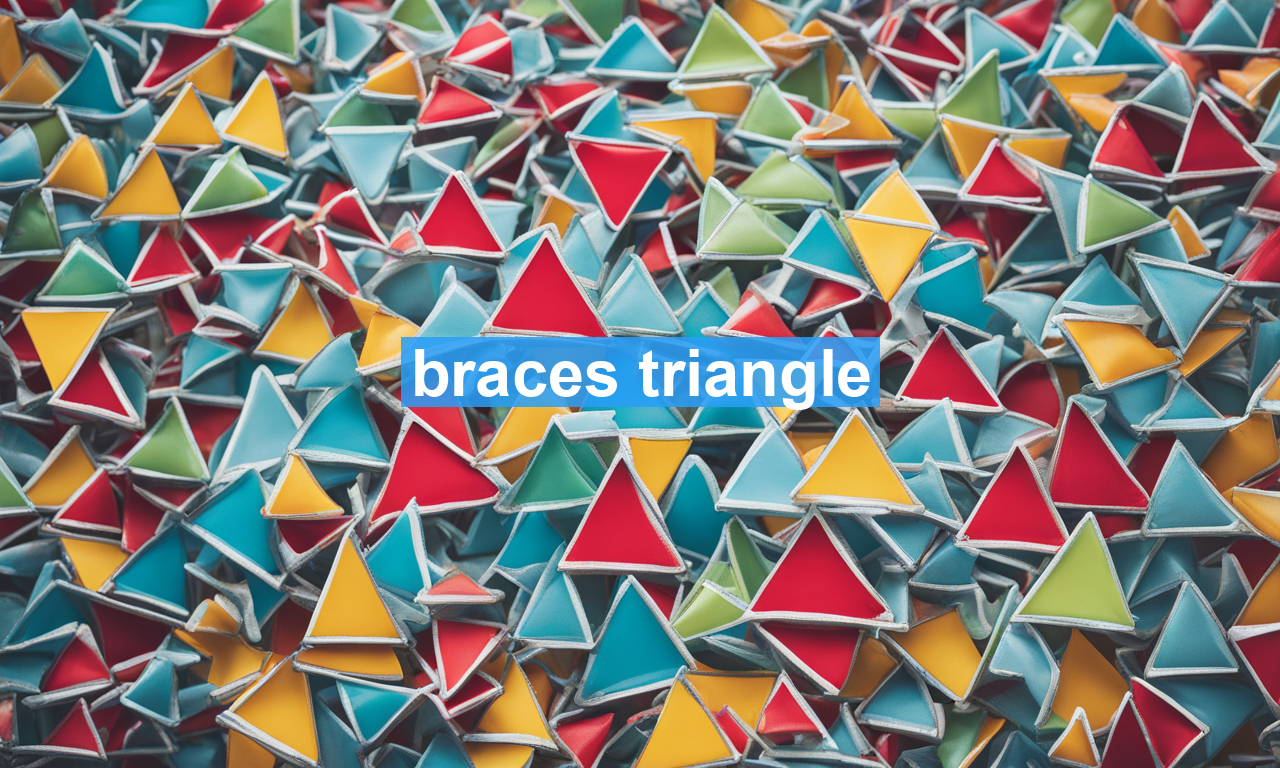Finding yourself on the brink of improving your smile can be overwhelming, especially with the myriad options available in orthodontics today. One intriguing concept that stands out in the realm of dental alignment is the “Braces Triangle.” Understanding this can significantly impact your decision-making process and treatment effectiveness.
What Is the Braces Triangle?
The Braces Triangle is not a physical object but rather a conceptual framework. Within orthodontics, it’s an integral part of how braces correct your dental alignment. Envision a triangle where each corner represents:
- Your teeth
- Your gums
- Your jawbone
These three components work cohesively to move, support, and stabilize the teeth effectively. Understanding their interactions helps orthodontists tailor treatments that not only straighten teeth but also ensure they’re well-supported by healthy gums and jawbones.
Why Is the Braces Triangle Important?
The significance of the Braces Triangle lies in its holistic approach to dental health. While most individuals focus primarily on achieving a straight smile, this framework reminds us that:
- Integration: Teeth, gums, and jawbone need to harmonize for successful realignment.
- Long-term Stability: Proper alignment ensures a balanced bite and longevity of results.
- Comprehensive Health: Orthodontic treatments should promote overall oral health, not just a cosmetic fix.
Focusing solely on the teeth might lead to excellent aesthetics, but without the necessary gum and jaw support, the results could be short-lived or lead to additional oral health issues.
How Does the Braces Triangle Influence Treatment Choices?
When considering orthodontic treatment, understanding the Braces Triangle can guide you in making informed decisions about the type of braces or aligners suitable for you. Here is how it influences your choices:
Comprehensive Assessment
Prior to any orthodontic intervention, a thorough examination is conducted. This usually involves:
- Dental X-rays to evaluate bone and teeth structure.
- Gum health assessment to determine any existing issues.
- 3D-imaging to plan tooth movement efficiently.
For further reading on the orthodontic diagnostic process, visit this American Association of Orthodontists page.
Treatment Plan Personalization
Each component of the triangle plays a crucial role. If an individual has strong teeth but weak gums or jawbone structure, treatments will be adjusted to fortify these areas alongside moving teeth. This might involve:
- Using specific appliances that distribute pressure evenly.
- Implementing targeted oral health regimens (e.g., special brushes for gum care).
- Incorporating bone-supporting supplements or exercises.
Investigate how orthodontic treatments can be customized for your needs by exploring this detailed overview by WebMD.
Choice of Braces
Various braces types accommodate different needs within the Braces Triangle:
- Traditional Metal Braces: Known for effectiveness across moderate to severe corrections, especially if jaw issues are present.
- Clear Aligners: Ideal for individuals with minor tooth alignment concerns where bone and gum health are excellent.
- Lingual Braces: Placed behind the teeth, good for specific cases demanding invisible solutions but requiring certain gum health to avoid irritation.
Each method targets the right balance as per the Braces Triangle, ensuring holistic treatment planning.
Maintaining the Braces Triangle Balance
Once under treatment, maintaining this balance is essential for optimal results:
- Regular Checkups: Consistent monitoring allows for timely adjustments and assessments of gum and bone health.
- Rigorous Oral Hygiene: Brushing and flossing become crucial, particularly in preserving gum health.
- Nutritional Support: Diet can significantly impact bone density and gum health, so consider balanced nutrition.
Adhering to these practices can vastly improve the outcomes of your braces treatment and ensure that your new smile remains sustainable for years to come.
Conclusion
The Braces Triangle remains a fundamental concept within orthodontics, emphasizing the interconnectedness of teeth, gums, and jawbone. By understanding and applying this knowledge, orthodontic treatments can be more personalized and effective. Whether you choose traditional braces or modern aligners, keeping the triangle balanced ensures optimal oral health and stunning results. Explore the potentially transformative journey with your orthodontist, keeping these insights in mind for a healthier, harmonious smile.

